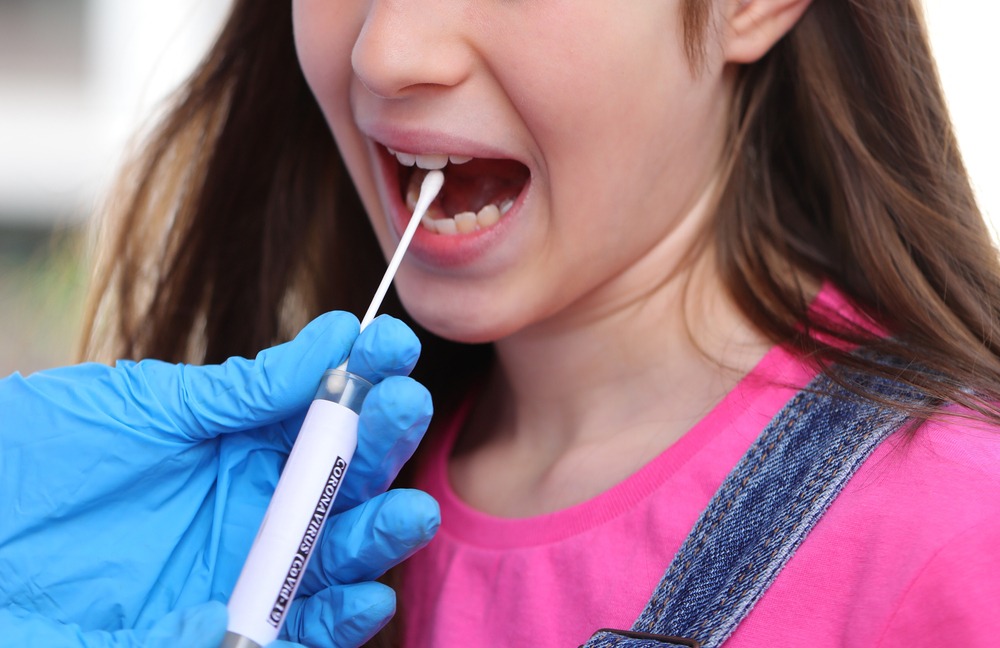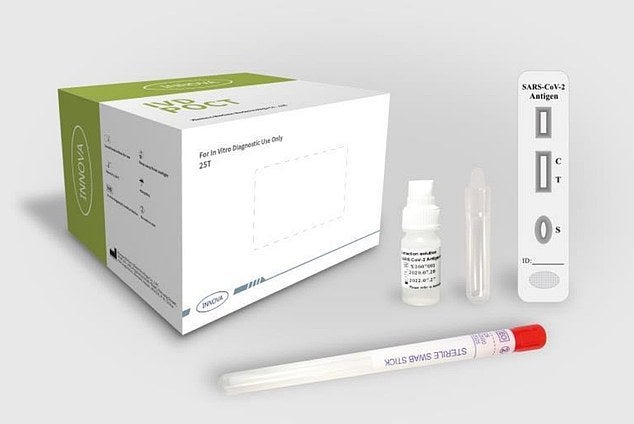The BMJ's chief statistical advisor cited multiple concerns about the inaccuracy of lateral flow testing for asymptomatic people

University students and care home workers are among those being tested using lateral flow immunoassays (Credit: Shutterstock/ ChiccoDodiFC)
The screening of asymptomatic people using lateral flow testing is an “unhelpful diversion” from the rollout of the Covid-19 vaccination programme, according to two experts in the fields of biostatistics and public health.
University of Birmingham Professor of biostatistics and British Medical Journal (BMJ) chief statistical advisor Dr Jon Deeks and Dr Angela E Raffle, honorary senior lecturer in social and community medicine at the University of Bristol, expressed the opinion in a BMJ editorial, citing preliminary data from the mass screening of largely asymptomatic people, which revealed sensitivity was much lower than the 76.8% quoted by the government.
The two shared their concerns as the UK continues to see lateral flow testing used in universities to allow students home for Christmas and in some care homes to allow relatives to visit, and in some cases to hug, residents.
The editorial read: “Whatever decision making process the UK government used, it ignored key evidence and dismissed expert international advice.
“The result is a considerable burden on care home staff, universities, NHS staff, public health teams, and schools, with minimal additional safety compared with existing risk mitigation measures.
“Asymptomatic lateral flow testing is an unhelpful diversion from the important task of vaccination rollout.”
Dr Deeks, who also leads test evaluation activities at medical research charity Cochrane, has been a vocal critic of the way the UK government has used lateral flow testing.
One of his major ongoing concerns was the way the Innova Tried and Tested lateral flow immunoassay, which was trialled for mass testing in Liverpool before being extended to other regions and settings, has been positioned as a reliable way to test whether a person is infectious, not just infected.
Data suggests lateral flow testing misses a significant number of cases
Alongside voicing their concerns, Dr Deeks and Dr Raffle reviewed the current evidence on the efficacy of Innova’s test.
A November release from Oxford University and Public Health England’s Porton Down laboratory stated that lateral flow tests were fit for the purpose of asymptomatic testing, despite the fact that detection rates (sensitivity) were 73% when tested by skilled NIHR research nurses and 79% when tested by Porton Down laboratory scientists.
When the government reported these findings, it said 95% of cases with high viral loads were detected.
But the major gripe shared by Dr Deeks and Dr Raffle was that when testing was conducted by Boots test centre employees, the researchers found sensitivity dropped to 58%, even in a sample of mainly symptomatic people.
“This is important, because it is closest to the circumstances for staff, student, visitor, and community testing,” the editorial explained.

An additional data point referenced was “tucked into annex B of a government guide to community testing”, according to the two experts, and it revealed that during the trial in Liverpool, Innova’s tests picked up five out of 10 of the cases PCR detected, and more than Seven out of 10 cases with higher viral loads.
“If a test misses 50% of infections, people with a negative result are not in the clear – their chances of active infection are simply half what they were before the test.,” the editorial read.
“Nobody can be considered free of risk of being infected or transmitting infection.
“Failing to identify 30% of people with high viral loads is six times worse than the almost 5% missed in the Porton Down/Oxford evaluation, and of particular concern.”
Given the questionable accuracy of lateral flow testing with current Innova assays, Dr Deeks and Dr Raffle urged those testing negative to continue to follow the rules around social distancing and wearing protective equipment.
“Allowing half of infected people, and one third of those with high viral loads, to unwittingly take the virus into hospitals, family homes, and care homes will not reduce the spread of the infection and could put lives at risk,” they said.
“Diligent maintenance of social distancing, personal protection, and other infection prevention control measures remains vital for people with a negative result.”
WHO and Innova agree lateral flow test should not be used to allow contact
Further to the concerns expressed by Dr Deeks and Dr Raffle, the World Health Organisation (WHO) guidelines on rapid antigen testing – the subset of immunoassays Innova’s product falls into – states that a negative result “should not remove a contact from quarantine requirements.”
Alongside this reference, the two experts wrote in their editorial that Innova itself recommends use of the test only in people with symptoms, and states: “Negative results do not rule out SARS-CoV-2 infection and should not be used as the sole basis for treatment or patient management decisions, including infection control decisions.”
